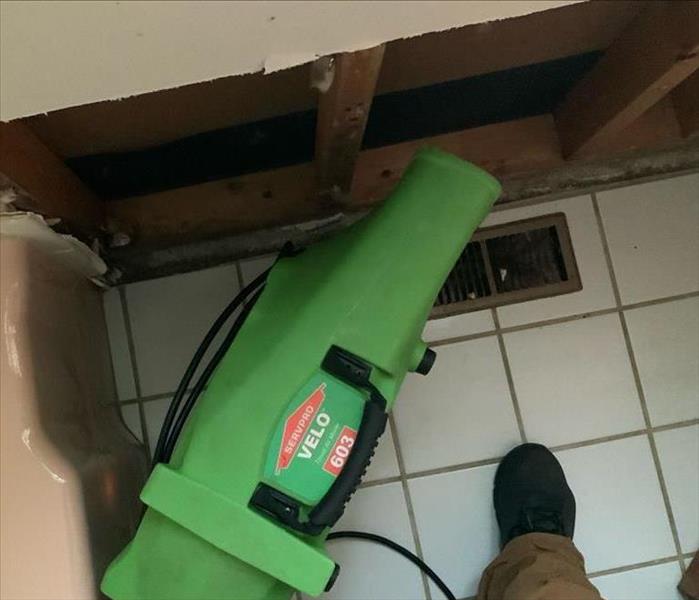1 Important Reason To Remove Drywall After Water Damage
9/14/2020 (Permalink)
Drywall is relatively cheap regarding other interior construction materials. Drywall is composed of gypsum (calcium sulfate dihydrate), paper, and other compounds such as mica, clay, and resin. Because of the makeup of drywall, water exposure will quickly cause damage.
Being a well-known company in the restoration industry, we understand that water exposure to water is not a strong point for drywall. To save drywall after water damage, a few factors need to be taken into consideration.
How does SERVPRO save drywall after water damage occurs?
In the case that the drywall only has a brief exposure to water for a short amount of time will make saving drywall much more manageable. The team at SERVPRO has saved drywall from splashes from an overflowing appliance. We know it is essential to act fast so that water is not absorbed into the drywall.
Small water damages are relatively easy to mitigate. If you have experienced as small water damage start by wiping down the wet areas immediately with towels and then point a fan at the affected drywall. We advise running a fan for a couple of days on the affected drywall to ensure that it is dry. If you want to ensure that the area is dry, you can invest in a penetrating moisture meter. All you have to do is stick the two pins into the drywall and see that moisture levels are equal to the dryness of drywall on a non-affected area.
When to remove wet drywall after water damage?
When drywall is heavily soaked from either flooding or another severe incident, the gypsum in drywall will become visually saturated. You will notice that the drywall is ultimately damaged when the drywall looks deformed and saggy. In more severe cases where the affected drywall has sat for a while, you will notice that it has completely collapsed inward.
Drywall is difficult to save after severe damage. When our technicians perform the most extensive drying techniques offered by the IICRC, the drywall will still not return to its original shape. We have found that it is best to remove and replace the drywall altogether to avoid a mess of crumbly drywall material.
The Number 1 Reason To Remove Drywall After Water Damage Occurs
The main reason that we find it essential to remove drywall after water damage is to avoid mold contamination. At first, the wet drywall in your home or business may seem intact and fine, but it is best to call a water damage restoration company. Delaying the drying process will enhance the possibility of mold growth on the drywall.
Drywall Mold
Mold on drywall will typically show up as dark spotting or blotches on the wall's exterior. Mold growth can occur within 24 to 48 hours after the drywall has been affected by water damage. The trained technicians use an antimicrobial during any water damage and mold jobs to stop further mold growth. An antimicrobial like Benefect will prevent the mold from growing further but remember that once mold has penetrated below the surface into the porous gypsum material, it is better to remove and replace it by a certified mold remediation company.
Although water damage can cause severe mold issues, we do have good news. Drywall is easy to remove and can be replaced with a few hours after the home structure has been dry. Call the professionals at SERVPRO of South Cobb if your home or business has recently suffered from water damage. We are the go-to water damage company in Smyrna, Georgia.
More about Smyrna.
Call us at (770) 739-2355.

 24/7 Emergency Service
24/7 Emergency Service
